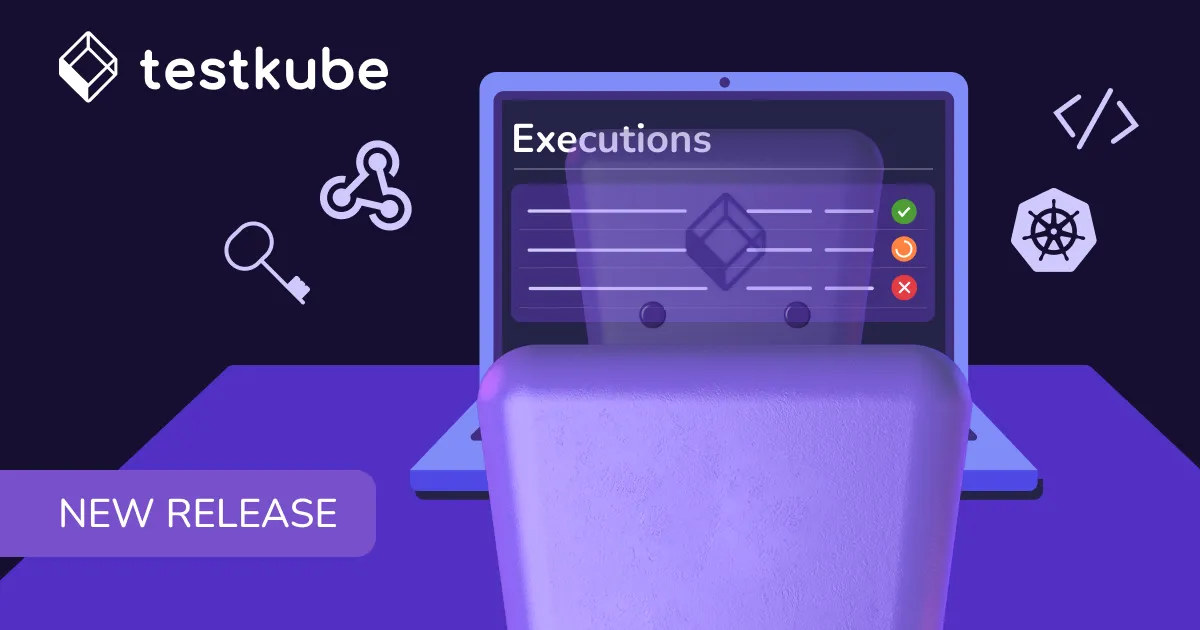

Table of Contents
Try Testkube instantly in our sandbox. No setup needed.
Unlock Better Testing Workflows in Kubernetes — Try Testkube for Free




Table of Contents
Executive Summary
When working with Kubernetes, traditional reporting methods may fall short in providing you with comprehensive insights, as you’re dealing with having your applications deployed across dynamic clusters. This can lead to delays in issue identification and resolution, and retrieving logs and test output files becomes an overall nightmare.
Wouldn’t it be better to have a unified, single pane of glass view of our logs, test executions, and test outputs - even across multiple testing tools?
This is where Testkube comes in! We are excited to announce the release of enhanced test reporting features for Testkube, designed to elevate your testing experience within Kubernetes environments. With these latest updates, Testkube gives you access to enhanced visualization capabilities that fit all your testing scenarios and debugging needs.
Want to learn more about the importance and benefits of having a centralized, single pane of glass view for your tests? Check out our guide on building centralized control planes for your tests.
Improved Visual Reporting with Artifacts Playback
If you and your team regularly conduct tests using tools like Cypress or Playwright, then you've probably struggled with storing and retrieving their output files efficiently without having to endlessly navigate through clusters and pods.
Regardless of the testing tool you use, Testkube now allows you to retrieve and visualize all generated files from your tests. Once tests are executed, Testkube automatically incorporates these files into your test execution reports, providing a visual playback of the test execution process. You can now reproduce these video files straight from the dashboard.
This enables your team to visually verify test results, observe how tests interact with your application, and precisely identify the causes of failures.
Detailed Test Insights with JUnit HTML Reports
QA teams using multiple frameworks may often come across output results in the JUnit format. This requires and easy way to view these results to assess the test coverage and effectiveness of your test executions.
Starting now, Testkube is now able to retrieve these reports for any testing tool within your cluster - allowing you to visualize them directly from the dashboard.


Getting Started with Improved Test Reports
Getting started with our new test reporting experience is easy:
- Sign into Testkube
- Install Testkube in your cluster
- Add your tests or create new ones from your Testkube dashboard or Testkube CLI
- Start running your tests
- Head over to any test execution and click on it to open the Log View
- You’ll immediately see the Artifacts tab which will show any output files produced during execution. If the test produced a JUnit report, the button Open Report will be available for you to view it directly
To try this and more of our new features, sign in to your Testkube account or sign up with a free trial today!
You can find the resources you need to get started in our documentation. Join our Slack community for guidance and support. Happy testing!


About Testkube
Testkube is a cloud-native continuous testing platform for Kubernetes. It runs tests directly in your clusters, works with any CI/CD system, and supports every testing tool your team uses. By removing CI/CD bottlenecks, Testkube helps teams ship faster with confidence.
Explore the sandbox to see Testkube in action.



.avif)


